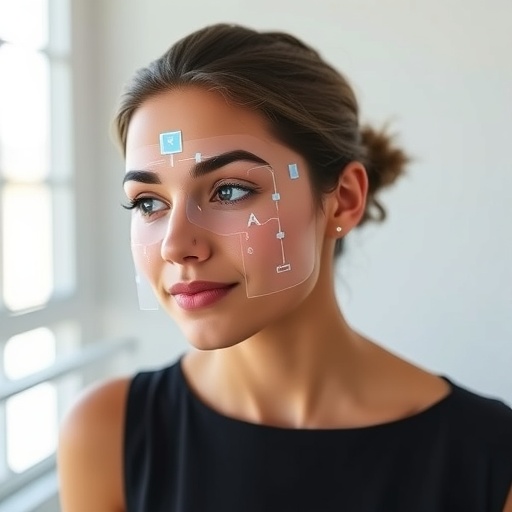Recent advancements in medical technology continue to shape the landscape of diagnostic procedures, especially in the field of dermatology. The emergence of machine learning algorithms, including the renowned YOLO (You Only Look Once) models, has sparked a revolution in the early detection of skin cancer. These algorithms leverage deep learning techniques to enhance the diagnostic process, improving both speed and accuracy, which could potentially save countless lives. Among these advancements is the innovative methodology presented by Rana, Modi, and Pandey, which emphasizes the application of explainable AI in healthcare, particularly for the detection of skin cancer.
The primary goal of the authors’ research was to develop a model that not only detects skin cancer effectively but also explains its decision-making process in a way that is understandable to dermatopathologists and medical professionals. This aspect of ‘explainability’ is crucial, as it assures patients and healthcare providers of the reliability of the AI’s assessments. The integration of explainable AI in dermatology is a groundbreaking approach that could facilitate higher levels of trust and confidence in automated systems, especially in critical health scenarios.
A unique feature of their methodology involves the removal of hair artifacts from dermatological images before analysis. Traditional image preprocessing techniques can often overlook the complexities presented by hair and other artifacts, which can obscure the features of skin lesions. By employing sophisticated hair removal algorithms, the researchers ensure that their models analyze clean, unobstructed images, significantly improving the accuracy of the detection process. This not only enhances model performance but also leads to more reliable and precise diagnostic outcomes.
Coupled with the hair artifact removal technique is the use of VGG16 guided annotation, an advanced deep learning architecture designed for image classification tasks. VGG16’s pre-trained capabilities allow the model to leverage a wealth of learned features to identify patterns associated with skin abnormalities. This synergy between innovative preprocessing methods and robust deep learning architectures makes the proposed approach stand out in the ever-evolving field of artificial intelligence in medicine.
The significance of early detection in skin cancer cannot be overstated. Skin cancer ranks among the most prevalent forms of cancer worldwide, and its early diagnosis is crucial for effective treatment. The models developed by Rana and colleagues aim to facilitate this timely diagnosis, thereby improving prognosis and survival rates for patients. The seamless combination of hair artifact removal and the VGG16 model ensures not just a rapid but also a highly accurate detection mechanism for skin cancer.
Through rigorous experimentation and validation, the authors demonstrate the efficacy of their methodology. The empirical results indicate a notable improvement in detection rates compared to traditional models. This progressive shift toward integrating AI in medical diagnostics paves the way for enhanced patient outcomes, underscoring the importance of this research in the global healthcare ecosystem. As practitioners continue to embrace AI technologies, the results feed into broader discussions regarding the responsibilities and ethical considerations tied to the deployment of machine learning in sensitive fields.
Moreover, making their model explainable adds a significant layer of value. In critically health-centered professions, automatic suggestions from AI tools can often seem opaque, creating apprehension among practitioners regarding their clinical judgments when dependent on such technologies. The integration of explanations within the outputs of the YOLO model allows for greater transparency, enabling healthcare professionals to validate AI recommendations effectively against their clinical knowledge when assessing skin cancer.
Future implications of this research extend beyond dermatology and skin cancer detection. The principles applied in this study can be transferred to multiple realms of medical diagnostics, where image quality and interpretation are paramount. Researchers and biomedical engineers could adapt the methodologies from this study to refine AI-driven diagnostic tools in other areas, making substantial contributions to the quest for universal early detection mechanisms in various diseases.
The partnership of academic researchers with clinical stakeholders is paramount. By sharing insights and co-developing models that accommodate the requirements of real-world applications, the bridge between AI innovations and clinical practices can be effectively reinforced. Engaging dermatologists in the iterative development process ensures that the tools being designed will indeed meet the genuine needs faced in diagnostic settings.
As the acceptance of AI continues to deepen within the medical field, it’s important to maintain an open dialogue about its risks and benefits. The capabilities of AI, manifested in the research outlined by Rana, Modi, and Pandey, affirm that machine learning can genuinely augment medical expertise without undermining the pivotal roles of healthcare professionals. Instead, these innovations are positioned to enhance human decision-making and patient care outcomes.
Essentially, the operation of explainable YOLO models in skin cancer detection encapsulates a significant leap forward in AI-driven healthcare solutions. As these technologies evolve, continuous collaboration between technical researchers and healthcare professionals will lead to a symbiotic relationship, ultimately resulting in better diagnostic tools, enhanced patient outcomes, and a more enlightened approach to managing disease prognosis.
The future of AI in medicine is bright, and the methods presented by Rana, Modi, and Pandey could very well be at the forefront of this transformative era. With ongoing refinement and research, such innovations can outreach traditional methodologies and extend their impact across various healthcare domains.
Subject of Research: Explainable AI in skin cancer detection
Article Title: Explainable YOLO models for early skin cancer detection using hair artifact removal and VGG16 guided annotation
Article References: Rana, L., Modi, N. & Pandey, S. Explainable YOLO models for early skin cancer detection using hair artifact removal and VGG16 guided annotation. Discov Artif Intell 5, 358 (2025). https://doi.org/10.1007/s44163-025-00637-7
Image Credits: AI Generated
DOI: https://doi.org/10.1007/s44163-025-00637-7
Keywords: Skin cancer, Explainable AI, YOLO, VGG16, Machine learning, Diagnostic tools, Healthcare, Early detection, Dermatology, AI-driven solutions.




